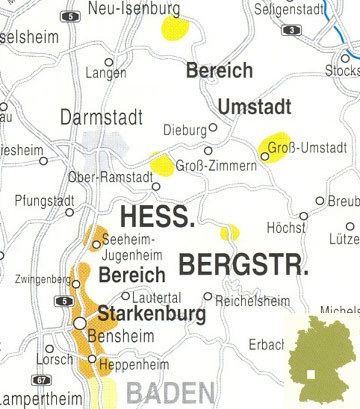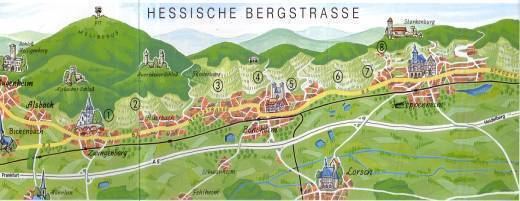 | ||
Hessische bergstra e
The Hessische Bergstraße ("Hessian Mountain Road") is a defined region (Anbaugebiet) for wine in Germany located in the state of Hesse among the northern and western slopes of the Odenwald mountain chain. With only 439 hectares (1,080 acres) of vineyards it is the smallest of the 13 German quality wine regions. At 21% red grape varieties and 79% white varieties, it is planted with primarily Riesling (48% as of 2008) and Spätburgunder (Pinot Noir, 10%). Hessische Bergstraße is divided into two districts (Bereiche) - Umstadt and Starkenburg - three collective vineyard sites and 24 individual vineyard sites.
Contents
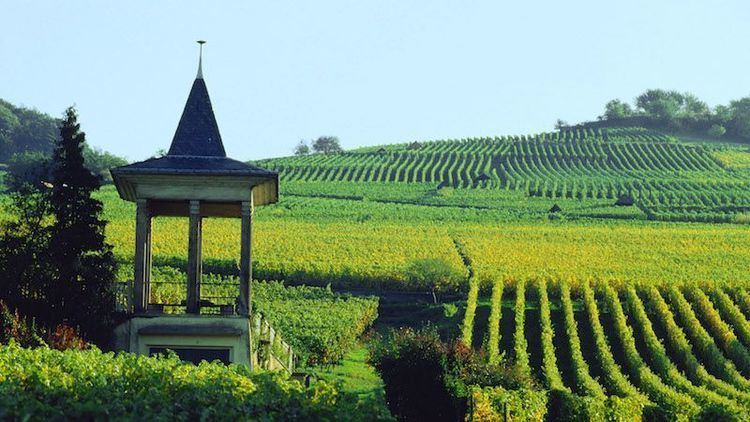
The region produces mostly dry wines but does have a sizable production of Eiswein. The wines from the best producers are in a style similar to that of Rheingau.
The majority of the region's wine is produced by a winemaking cooperative based in the city of Heppenheim, to which about 620 of 850 growers of the region deliver their grapes. The state government of Hesse, through the Hessian State Wineries (Hessische Staatsweingüter) is the biggest single vineyard owner with 38 hectares (94 acres) and a winemaking facility near Bensheim.

Because of the small production and a location rather close to densely populated areas, most of the wines is sold locally, and it is very uncommon to see Bergstraße wines outside of Germany.
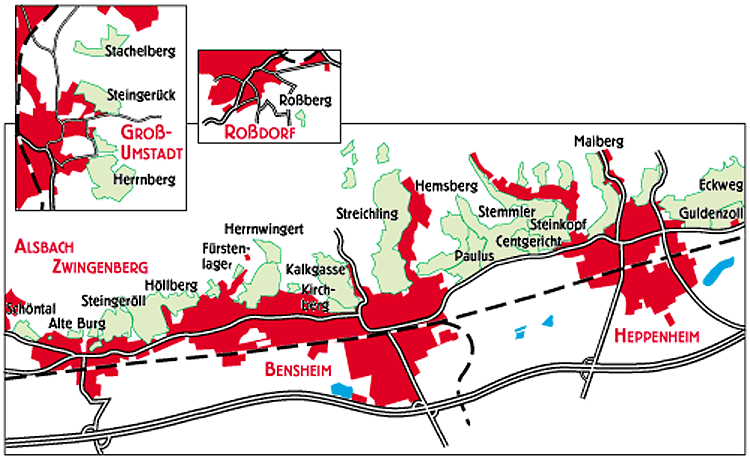
History
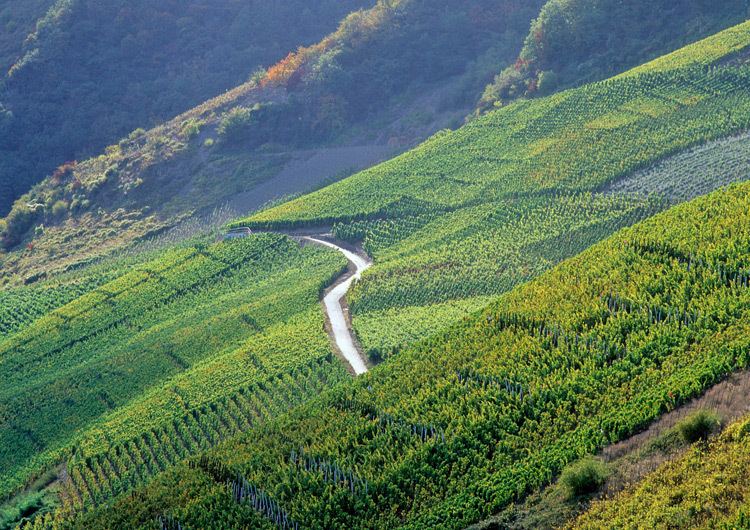
When the Counts of Katzenelnbogen first cultivated Riesling in 1435 the first time they already documented wine from the Bergstraße. This northern Bergstraße was their property: When they died out in 1479 this part of the county came to the Landgraves of Hesse.
Hessische Bergstraße was given the status of a separate wine region in 1971.
Grape varieties
The most cultivated grape varieties, by area in 2008, were the following:
